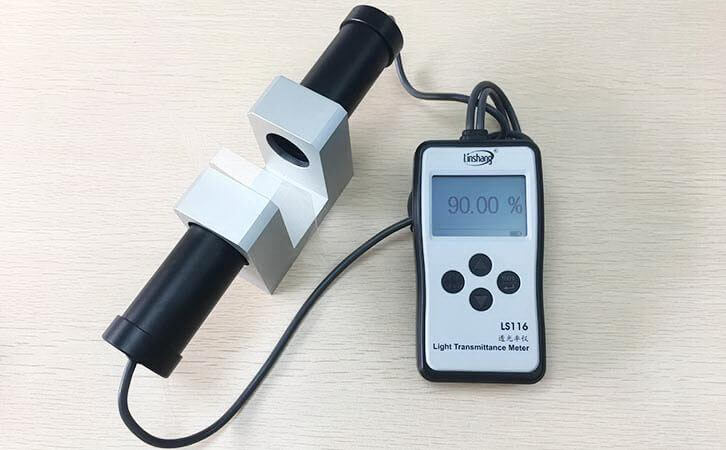Application and Detection of Light Transmittance Tester
For most people, the light transmittance tester is a very strange and difficult word. But its practical application and detection in real life are closely related to everyone. The light transmittance reflects the light transmission quality of glass products, film products and acrylic plates. The light transmittance tester can be used to repeatedly and accurately perform on-site detection.
1. The transmittance of glass
We know that when light passes through glass, it is divided into three cases: reflection, absorption and transmission. Glass transmittance refers to the "transmission" property, which is also an important factor that affects the intensity of ultraviolet radiation and solar energy received by people. The high transmittance glass material can effectively absorb the solar radiation energy and can withstand the solar ultraviolet radiation. Of course, the naked eye and the perception cannot distinguish the light transmittance of the glass. A high-precision and excellent light transmittance tester is needed.
2. Film transmittance
The application of plastic film in daily life is mainly to build a greenhouse and the thickness is generally 0.08 to 0.12 mm. And the thickness of most aging-resistant functional shed films is 0.10 to 0.12 mm. However, after the film is covered, aging usually occurs within a period of time, which reduces the light transmittance by 20% to 40%, which is not conducive to the normal growth of plants,vegetables and fruits. In actual use, the transmittance of polyethylene film and polyvinyl chloride film is 90%. After 2 months of use, the transmittance of polyvinyl chloride film is reduced to 55% and the transmittance of polyethylene film Keep it at 80%. The change of the film light transmittance should be frequently surveyed with a high-quality light transmittance testerwhich has intelligent digital display, so as to facilitate real-time monitoring, thereby avoiding the problem of the decline in light transmittance caused by the aging of the film.
3. Application and detection of light transmittance tester
The accuracy and intensity of light transmittance testers on the market are very different. In contrast, modern light transmittance testers can automatically calibrate, support LED digital display. The instrument can repeatedly and accurately measure. The practical application of the light transmittance tester also tends to be diversified and comprehensive. Nowadays, it is very common for automobiles to affix solar films. Many automotive solar film manufacturers confuse the concept of "light transmittance" for profit. According to relevant regulations, the light transmittance of 70% refers to the overall light transmittance of the glass and solar film after filming. The light transmittance tester can not only directly measure the light transmittance of transparent materials, but also reflect whether the car's solar film affects the glass light transmittance to ensure the normal driving visibility of the driver.
For the light transmittance test of transparent films, you can use Linshang LS116 high-precision light transmittance tester. The accuracy of this instrument can reach within ± 1%, ensuring the national measurement. For the measurement of the light transmittance of the greenhouse film, it is recommended to use the Linshang LS117 light transmittance tester. Because some greenhouse films are not necessarily completely transparent, as the thickness of the film increases, the material may appear translucent. The LS117 light transmittance tester uses a diffuse transmission design principle dedicated to fog materials, matte materials and transparent material. Different lighttransmittance testers are used in different application scenarios.
- Linshang Insulated Glass Unit Measuring Tools
- Spectacle lens anti-blue light detection---blue-violet light transmittance meter
- Measurement of Optical Density
- Difference of LS116 Transmission & LS117 OD Meter
- Difference between LS116 and LS117 Light Transmittance Meter
- What’s the Difference Between Point Light and Parallel Light Transmittance Meter
